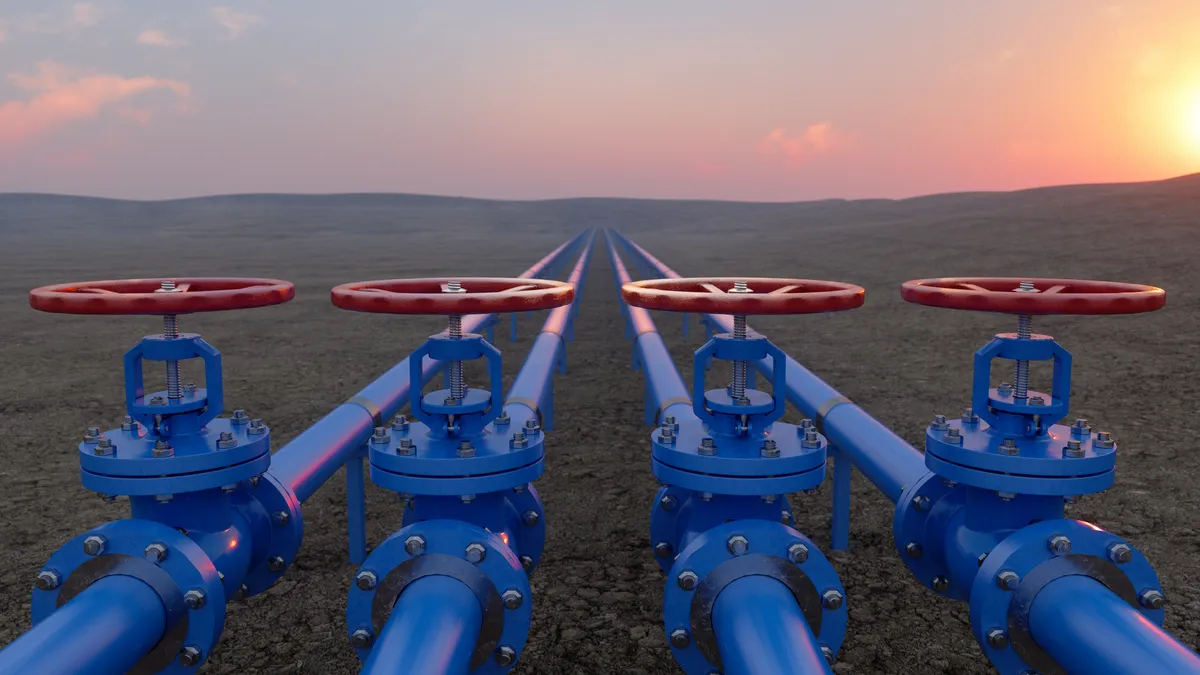Dive Brief:
- State and federal decarbonization policies, combined with efforts to electrify many end-use appliances, threaten the long-term competitiveness of natural gas local distribution companies, or LDCs, Moody’s Investors Service warned in a research note issued Monday.
- Emissions reduction targets could shrink LDCs and drive up their costs while electrification “poses an existential threat” to their business model, the ratings agency said. The use of alternative fuels such as hydrogen and renewable natural gas can reduce emissions but come with higher costs, the firm said.
- To adapt to mounting decarbonization pressures, the gas sector must press for supportive regulatory policies and emphasize the fuel’s ability to help integrate renewable generation and resilience of the natural gas system, according to a report prepared by Guidehouse and published Monday by the American Gas Foundation.
Dive Insight:
Gas utilities face a dilemma as they try to balance affordability relative to electric alternatives with the need to decarbonize, said Moody’s. Their long-term advantage, however, may be the sheer volume of energy delivered.
“LDCs can reduce emissions in a number of different ways, many of which would incur additional costs that would be borne by end users,” Moody’s said. That could lead to additional scrutiny from regulators and make them less competitive with electric alternatives.
However, LDCs have a “key strategic advantage,” said Moody’s. They can “reliably deliver a significant amount of energy on demand that may be extraordinarily expensive to replace.”
“This creates a substantial barrier to replacing them, although this may vary materially by region,” the ratings agency said.
Gas companies understand the challenge they face, according to Karen Harbert, CEO and president of the American Gas Association. The policy recommendations included in the Guidehouse study are “excellent guidance” for a sector that must embrace a low-carbon future, she said in a statement.
The report provides recommendations for regulators, policymakers, stakeholder groups and utilities, including for the Federal Energy Regulatory Commission and Department of Energy to work on rules to improve interdependencies between the electric and gas sector. FERC, the report said, could establish baseline resilience requirements for jurisdictional energy systems, and classify pipeline and distribution infrastructure as critical loads for electric service.
“AGA and its members are talking to policymakers at every level about adopting these necessary strategies,” Harbert said.
Separately on Monday, National Grid published a white paper examining gas distribution system decarbonization strategies. The paper was developed with RMI. The Regulatory Assistance Project, the Environmental Defense Fund and several other utilities participated.
The group identified six broad strategies for LDCs: improving gas infrastructure planning, designing decarbonization plans to benefit customers and communities; creating gas utility innovation programs and funding; evolving the gas business model; developing an efficient and flexible building sector; and establishing low-carbon heating and fuel standards.
Low-carbon heating and fuel standards may help utilities invest in decarbonization technologies and provide “market and regulatory certainty” for those technologies,” the report said. Examples include renewable natural gas procurement targets set by the California Public Utilities Commission or a Colorado standard requiring gas utilities to develop comprehensive plans to reduce methane and carbon dioxide emissions at the lowest reasonable cost.
The RMI/National Grid white paper findings are similar to American Gas Association research concluding the gas system is “essential” to meeting the United States’ greenhouse gas emissions goals, said Juan Alvarado, American Gas Association’s senior director of energy analysis.
AGA in February published “Net-Zero Emissions Opportunities for Gas Utilities,” concluding “large amounts of renewable and low-carbon electricity and gases and negative emissions technologies will be required to meet an economy-wide 2050 net-zero target.”
Despite the higher costs of hydrogen and renewable natural gas, “their use is likely to move forward in many jurisdictions,” Moody’s said in its report.
“While fluctuations in natural gas prices can lead to significant volatility in rates for customers, the forward curve for natural gas indicates that LDC customer rates will decline over the next few years, reinforcing the sector's position as the cheapest, most reliable energy provider for space and water heating,” Moody’s said.















